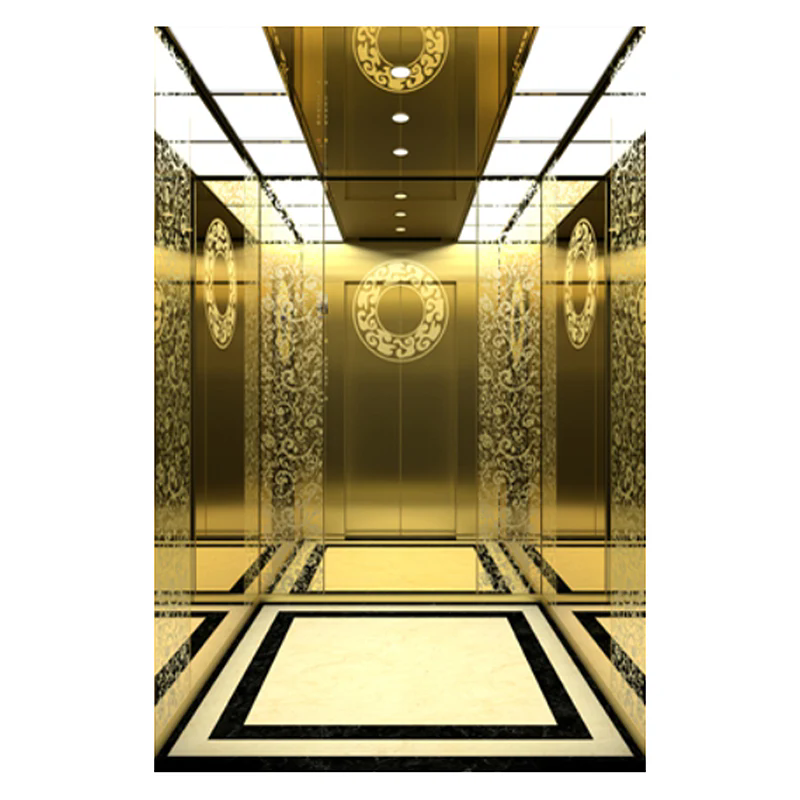Understanding Passenger Elevators: Function, Types, and Benefits
2025-02-13
Passenger elevators are an essential part of modern buildings, providing a safe and convenient way to move people between floors. Whether in residential buildings, office towers, shopping malls, or hospitals, passenger elevators enhance accessibility and improve the overall flow of people in multi-story structures. In this article, we will explore the function, types, and benefits of passenger elevators.
What is a Passenger Elevator?
A passenger elevator is a vertical transportation system designed to carry people between different floors of a building. Unlike freight elevators, which are intended to carry goods, passenger elevators are specifically built to safely accommodate individuals. These elevators typically consist of a cabin (or car) that moves along vertical shafts. The cabin is powered by a motor that either uses cables and pulleys or hydraulic systems to raise and lower the elevator.
Passenger elevators can carry varying numbers of people, depending on the design and capacity of the elevator. The interior of the elevator is equipped with controls that allow passengers to select their desired floor. Elevators are designed with safety features, including emergency communication systems, weight limits, and automatic doors to ensure secure and smooth operation.
How Do Passenger Elevators Work?
The operation of a passenger elevator depends on the mechanism used for movement. The two most common systems are:
1. Traction Elevators:
In traction elevators, the car is lifted and lowered by a system of ropes or cables, which are controlled by an electric motor located at the top of the shaft. These elevators are typically used in high-rise buildings because they offer smooth and efficient operation, even over long distances. The motor drives the pulley system, which moves the elevator car along the guide rails.
2. Hydraulic Elevators:
Hydraulic elevators use a hydraulic piston to lift and lower the elevator car. These elevators are ideal for low-rise buildings (usually up to 5 stories) because they are more cost-effective and require less space for installation. The hydraulic system involves a pump that moves oil into a cylinder, which in turn pushes the elevator car upwards. Once the oil is released, gravity brings the car back down.
Both systems rely on safety mechanisms such as limit switches, brakes, and backup power to prevent accidents and ensure passengers’ safety.
Types of Passenger Elevators
Passenger elevators come in various types, each designed to suit specific building requirements, traffic loads, and architectural features. Some common types of passenger elevators include:
1. Standard Passenger Elevators:
These are the most common type of elevator found in residential, commercial, and institutional buildings. They come in a variety of sizes and can be customized to fit the building’s aesthetic and space. Standard passenger elevators can handle moderate to heavy traffic depending on their design and capacity.
2. Glass Elevators:
Glass elevators are visually appealing, featuring transparent walls that allow passengers to enjoy scenic views as they travel between floors. These elevators are often used in buildings with attractive views, such as malls, hotels, or observation towers. While they offer a more luxurious experience, they also come with added design complexity and cost.
3. Freight and Passenger Combined Elevators:
Some buildings, particularly in industrial or mixed-use spaces, use combined freight and passenger elevators. These elevators are designed to accommodate both people and goods, making them ideal for situations where both needs are present in a building. They are typically more robust and spacious than standard passenger elevators.
4. Machine Room-Less (MRL) Elevators:
MRL elevators do not require a separate machine room, as the motor and control systems are housed within the elevator shaft itself. This type of elevator is more energy-efficient and space-saving, making it a popular choice for modern buildings with limited space for machinery. MRL elevators are commonly found in mid-rise buildings.
5. High-Speed Elevators:
High-speed elevators are designed to travel at faster speeds, making them ideal for tall skyscrapers or office buildings. These elevators can reach speeds of up to 1,000 feet per minute and are equipped with advanced systems to ensure smooth and efficient movement. They often feature advanced control systems to optimize performance and minimize wait times.
Benefits of Passenger Elevators
1. Accessibility:
One of the primary benefits of passenger elevators is the accessibility they provide. Elevators allow individuals, especially those with mobility impairments, to easily move between floors without the need for stairs. They ensure that everyone, including elderly and disabled people, can access all parts of a building.
2. Convenience:
Elevators provide great convenience, especially in high-rise buildings where climbing stairs can be impractical. They save time and energy, allowing people to quickly travel between floors with minimal effort. This is particularly beneficial in busy buildings where there is a high volume of foot traffic.
3. Space Efficiency:
Elevators can efficiently transport many people at once, helping to reduce congestion and waiting times. In commercial and office buildings, they help keep people moving smoothly and prevent overcrowding, improving the overall efficiency of the building.
4. Safety:
Modern passenger elevators come with advanced safety features, including emergency alarms, backup power systems, automatic doors, and intercom systems. These safety mechanisms ensure that passengers are protected in case of emergencies, such as power failures or accidents.
5. Increased Property Value:
Installing an elevator in a building, especially in multi-story residential buildings, can increase its market value. Elevators are a desirable feature for buyers who are looking for modern, accessible living spaces. They add convenience and appeal, making properties more attractive to potential buyers or tenants.
6. Energy Efficiency:
Advances in technology have made elevators more energy-efficient. Modern elevators use less electricity and are designed to consume less power during operation. Additionally, regenerative drives are used in some elevators to capture energy during descent, which can be fed back into the building’s electrical system.
Conclusion
Passenger elevators play a crucial role in modern buildings, enhancing accessibility, convenience, and safety for all users. With various types available, including hydraulic and traction systems, as well as advanced features for energy efficiency and safety, elevators have become indispensable in both residential and commercial spaces. Whether in a high-rise office building or a shopping mall, passenger elevators improve the flow of people and make navigating multi-story structures easier and more efficient.



